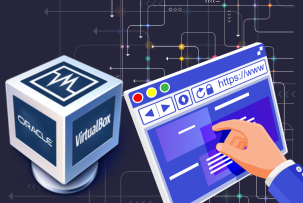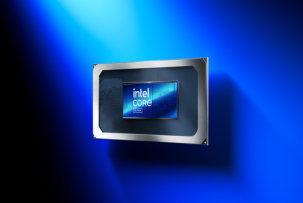Data centers: What are the main trends of 2021 so far
09:58, 24.09.2021
The foundation of the modern global economy is not industrial sites, nor marketing or even money, but… data centers. It is inside them all trade and financial transfers take place, as well as information exchange. It became especially noticeable during COVID-19 pandemic and when all spheres of life became online… As a result, the data center industry grows all over the world and its development trends influence every business. That's why everyone should take a closer look at the top 5 key trends in the data center industry which might be relevant in 2022 as well!
What determines the development of data centers?
At the beginning we should make a disclaimer: the places in our ranking are not places of importance. The order of trends in the list is not determined by their importance, but rather by the logic of the natural transition from one trend to another, by their interconnection.
1. Accelerated transformation of data centers
In the web hosting professional community, the expression: not data centers but centers of data is often used recently. This vividly characterizes the shift of emphasis, where data centers become full-fledged data centers with machine learning and AI, artificial intelligence. There are a number of reasons for this transformation:
- Digitalization. The coronavirus crisis has caused a very rapid move to online of both remote employees and previously unrepresented businesses and government agencies with services. Such mass digitization has become one of the underlying drivers of data center growth in 2020 and 2021 - and will noticeably change them further.
- Clouds. Cloud storages are inextricably linked to the previous point and implies more and more possibilities to access content and share information from anywhere on the planet without being tied to locations: both for the user and the server. That is why more and more applications and software are appearing for different ways of working with clouds and their content.
- 5G. The new communication format is not being introduced as quickly as many people have expected, but it is playing a vital role in industry strategies. High transmission speeds "over the air" are important not only for businesses, but also for ordinary users with the growing number of connected wearable devices and the "Internet of Things," the IoT, which generate huge amounts of data.
2. Change of data center infrastructure approach
Changes in the principles of work with data centers and their transformation adjust the structure of demand for their services. Here we need to highlight two basic needs, without which everything else simply does not make sense:
- Hyper-scalability. Flexible expansion of server capacity for data transfer and instant analysis has long been a trend in the industry, but now this factor has reached a new level. In a modern data center, it is necessary to have the widest opportunities for immediate growth, including colocation - the placement of client equipment on the data center premises.
- Automation. The more data there is, the more difficult it is for humans to process. That is why there is a growing demand from data center service consumers for advanced "software" tools. Firstly, they concern the operation of servers: their automatic updating, error correction and other routine tasks, leaving only the critical processes to humans.
3. Transition to new service models
Data centers in their usual format with traditional ways of forming pricing plans are gradually becoming a thing of the past. Yes, they can be convenient for many customers, but all the changes described above also mean the emergence of data center offerings as a service (DCaaS). In this case, the customer does not buy fixed capacities and volumes, but pays strictly for what is consumed in a given period. With dramatic adjustments in demand and scalability in business, this principle looks more justifiable and correct for many in the calculations stage already. It is important to emphasize that many cloud services already operate under such rules, which only emphasizes their prospects for traditional data centers as well.
4. Turning away from the ‘real’ hardware
Of course, data centers themselves are not giving up on server racks - it is only about the consumers of such a service. This trend is fully in line with the vector of greater flexibility of the industry in literally everything and is expressed in two factors:
- SDDC. This abbreviation is derived from Software Defined Data Center, and it is based on virtualization. The client has "hardware" separated from the service: CPU, memory, storage, even switches - everything is not connected to the hardware which accelerates the work, increases its flexibility and security.
- Monitoring. More than anything else, server virtualization requires a high level of visualization. Transparency in data centers comes to the fore, so they must provide as many tools as possible for high-quality and comprehensive remote tracking of resources and processed data and creating templates for business intelligence.
5. The emergence of edge data centers
Powerful, technically advanced data centers with high-speed over-the-air connectivity are important, but in many cases even they cannot meet the challenges of the user. That's why Edge Data Center has emerged as a counterbalance. It is a relatively small data center located locally, connected to a larger one, but on a remote basis. To a certain extent, it can be compared to servers standing directly on the territory of the DC, but the Edge technology capabilities are still noticeably wider. For example, they better meet the new challenges - in the form of the same IoT, gadgets with a bunch of sensors, streaming and autonomous transport. The essence of the solution is not to send arrays of data to a single data center, but to perform primary processing directly on site, obtain results in real time - and transfer only the results to the center to systematize and analyze them. Edge computing offers a number of advantages:
- Reduced latency to a minimum, because usually it is unavoidable when sending all packets to a data center or cloud hundreds of kilometers away.
- Increased security because the amount of information transmitted that can be intercepted by attackers is noticeably lower.
- Improved ecology, as the load on large data centers is lower (and the transition to their "green" power supply is also part of global trends).
- Reduced cost of data storage and processing (although, of course, the infrastructure changes themselves need investment).
How to choose up-to-date data centers?
There are many ways to find trendsetting data centers. But why waste time when you can simply contact HostZealot? We select data centers based on a variety of criteria, from broadband connections with multiple providers and 99.999% uptime, to flexible customization and cloud solutions. And our data centers are located all over the world: in the United States and Canada, Sweden and Estonia, the United Kingdom and the Netherlands, Poland, Hong Kong and Cyprus. Plus you can choose from a variety of options like dedicated servers, VPS, web hosting, colocation and various pricing plans that allow you to conveniently select and adjust capacity to the changes in your online projects. We'll show you how truly modern data centers work!


